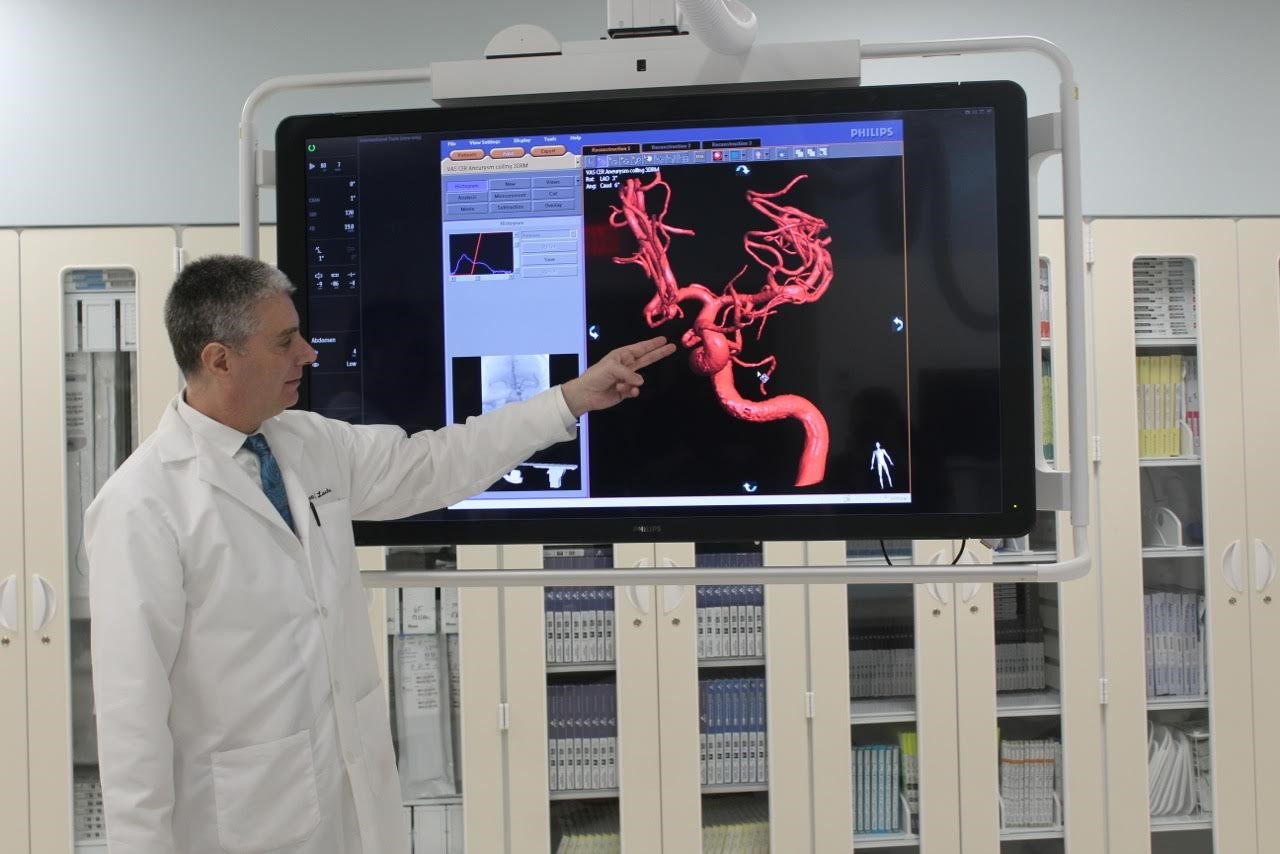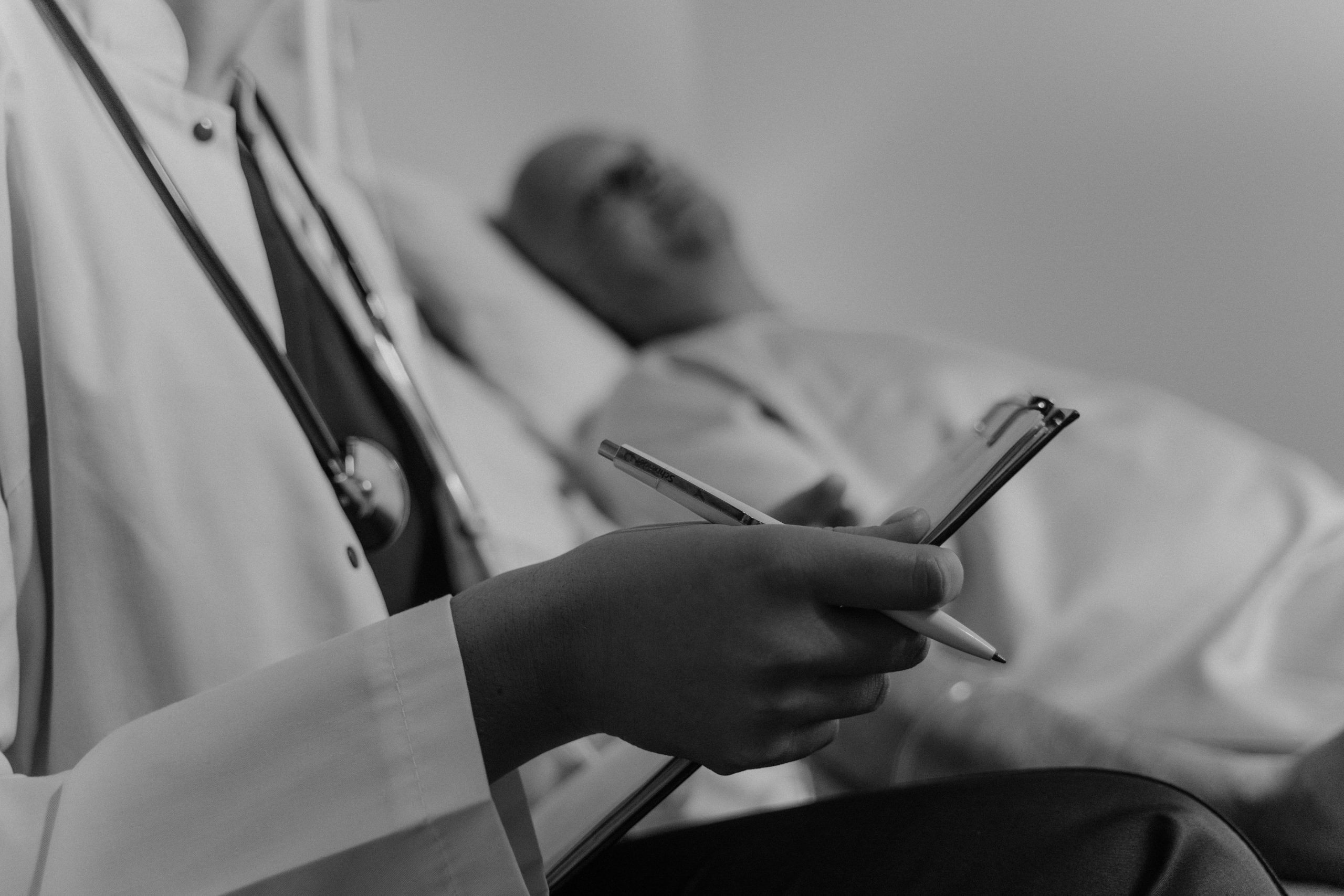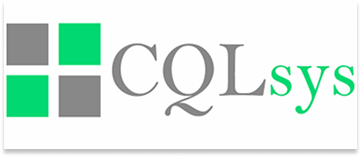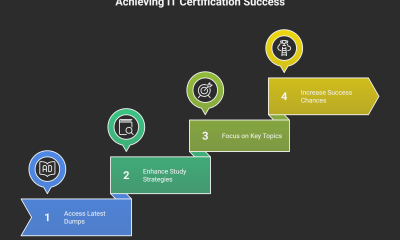health
Tech Revolutionizing Emergency Care

In the ever-evolving landscape of healthcare, emergency medicine stands as a critical frontier where technological advancements can have immediate and life-saving impacts. The integration of cutting-edge technologies in emergency departments (EDs) has transformed the way medical professionals diagnose, treat, and manage acute medical conditions. This article delves into the latest advancements in emergency medicine technology, focusing on key innovations that are revolutionizing patient care.
Telemedicine and Remote Monitoring
One of the most significant advancements in emergency medicine is the adoption of telemedicine and remote monitoring technologies. Telemedicine allows for real-time consultations between emergency physicians and specialists, regardless of geographical barriers. This is particularly beneficial in rural or underserved areas where access to specialized care is limited.
Remote monitoring technologies, such as wearable devices and mobile health apps, enable continuous tracking of vital signs and other health metrics. These tools allow for early detection of potential health issues, enabling timely interventions. For instance, patients with chronic conditions like heart disease can be monitored remotely, reducing the likelihood of emergency visits and hospital readmissions.
Artificial Intelligence and Machine Learning
Artificial intelligence (AI) and machine learning (ML) are making significant inroads into emergency medicine. AI algorithms can analyze vast amounts of data quickly and accurately, assisting in the diagnosis and treatment of complex medical conditions. For example, AI-driven diagnostic tools can interpret medical imaging, such as X-rays and CT scans, with a high degree of accuracy, often surpassing human capabilities.
Machine learning models can also predict patient outcomes based on historical data, helping emergency physicians make informed decisions. Predictive analytics can identify patients at high risk of complications, enabling proactive management and improving overall patient outcomes. Additionally, AI-powered chatbots can assist in triaging patients, ensuring that those with the most urgent needs receive immediate attention.
Portable Diagnostic Devices
The development of portable diagnostic devices has been a game-changer in emergency medicine. These compact, easy-to-use devices allow for rapid diagnosis at the point of care, significantly reducing the time to treatment.
Portable ultrasound machines, for example, are now commonly used in EDs to quickly assess internal injuries and conditions. Similarly, handheld ECG devices enable rapid cardiac assessments, crucial for diagnosing and managing heart attacks. These devices not only expedite the diagnostic process but also enhance the accuracy of initial assessments, leading to better patient outcomes.
Advanced Imaging Technologies
Advanced imaging technologies have also made significant strides, offering emergency physicians more detailed and accurate diagnostic information. High-resolution CT scanners, for instance, provide detailed images of internal organs, bones, and tissues, aiding in the rapid diagnosis of conditions such as strokes, fractures, and internal bleeding.
Magnetic resonance imaging (MRI) has also seen advancements, with faster scan times and improved image quality. These improvements enable quicker diagnosis and treatment, particularly for conditions that require detailed imaging, such as spinal injuries and brain hemorrhages.

Picture by: Yandex.com
Electronic Health Records (EHRs) and Health Information Exchange (HIE)
The implementation of electronic health records (EHRs) and health information exchange (HIE) systems has streamlined the flow of information within emergency departments. EHRs provide a comprehensive view of a patient’s medical history, allergies, medications, and previous treatments, enabling emergency physicians to make informed decisions quickly.
HIE systems facilitate the secure sharing of patient information between different healthcare providers and institutions. This interoperability ensures that emergency physicians have access to the most up-to-date information, reducing the risk of medical errors and improving coordination of care.
Simulation-Based Training
Simulation-based training has become an integral part of emergency medicine education. High-fidelity simulators and virtual reality (VR) environments provide realistic training scenarios for medical professionals. These technologies allow for the practice of complex procedures and decision-making skills in a controlled, risk-free environment.
Simulation-based training enhances the preparedness of emergency physicians, nurses, and other healthcare professionals, ensuring they are equipped to handle a wide range of medical emergencies. This hands-on experience is invaluable in improving clinical skills and boosting confidence in real-life situations.
Mobile Stroke Units
Mobile stroke units (MSUs) represent a significant advancement in the pre-hospital management of stroke patients. These specialized ambulances are equipped with advanced imaging technology, such as portable CT scanners, and staffed by a team of stroke specialists. MSUs enable the rapid diagnosis and treatment of stroke patients at the scene, significantly reducing the time to intervention and improving outcomes.
By administering clot-busting drugs or other treatments en route to the hospital, MSUs can reduce the severity of stroke-related disabilities and increase the likelihood of full recovery. This innovative approach to stroke care exemplifies the potential of mobile healthcare technologies in emergency medicine.
Conclusion
The advancements in emergency medicine technology are reshaping the way healthcare professionals deliver care in critical situations. From telemedicine and AI to portable diagnostic devices and advanced imaging technologies, these innovations are enhancing the speed, accuracy, and effectiveness of emergency medical care.
As technology continues to evolve, it is imperative for emergency departments to stay abreast of these developments and integrate them into their practices. By embracing these advancements, emergency medicine can continue to improve patient outcomes, reduce healthcare costs, and save lives. The future of emergency medicine is undoubtedly intertwined with technology, promising a new era of enhanced care and innovation.
health
Why XendoHealth Becoming a Go-To Source for Health Insights

Introduction
Today, healthcare is changing fast, and having a reliable place for health information is very important. Patients and caregivers often use online platforms to learn about medical conditions, treatments, and ways to stay healthy. But with so much information online, it can be hard to know what is true. Accurate health information helps people make smart choices, stay healthier, and talk more clearly with their doctors.
From preventive care tips to updates on medical research, XendoHealth helps individuals make informed decisions about their health. This article explores why XendoHealth is quickly becoming a go-to resource for people seeking reliable, practical, and accessible health information.
The Rise of Digital Health Platforms
- Providing Easy Access to Information: People want to learn about their health before or during treatment. Digital health platforms give them quick access to reliable, up-to-date information so they can take charge of their health.
- Closing the Knowledge Gap: Not all online health information is trustworthy. Platforms that use expert-reviewed articles and research help turn complex medical knowledge into easy-to-understand advice, giving people accurate information they can trust.
Introducing XendoHealth
1. What Makes XendoHealth Stand Out?
XendoHealth is a comprehensive digital healthcare platform that has quickly gained recognition as a go-to source for reliable health information. By combining technology with expert-reviewed medical content, XendoHealth empowers patients to access trustworthy guidance efficiently.
Key Features of XendoHealth
- Expert-Reviewed Content: Each article is thoroughly reviewed by healthcare professionals to ensure factual accuracy.
- User-Friendly Experience: The platform is designed for easy navigation, allowing users of all ages to find relevant information effortlessly.
- Personalized Recommendations: Based on users’ profiles and health preferences, XendoHealth provides tailored advice.
- Wide Range of Health Topics: Covering chronic conditions, preventive care, mental health, and lifestyle guidance, the platform caters to diverse health needs.
2. Building Trust Through Transparency
Transparency is central to XendoHealth’s approach. Every article cites credible sources, providing users with the confidence that the information is reliable. This trustworthiness has contributed to its growing popularity as a preferred health insights platform.
How XendoHealth Simplifies Health Information Access
- Simple Navigation and Search: Users can quickly search for health topics or browse categories, making it easy to find reliable information without wasting time.
- Wide Range of Health Topics: XendoHealth covers everything from diabetes to mental health, offering clear explanations, lifestyle tips, and treatment options all in one place.
- Interactive Tools: Features like symptom checkers, wellness trackers, and health calculators help users understand and manage their health in a practical way.
Benefits of Reliable Health Insights
1. Empowering Patients
Access to credible health insights empowers patients to actively participate in their care. They can ask informed questions during consultations, evaluate treatment options critically, and adopt healthier lifestyles.
2. Enhancing Doctor-Patient Communication
Well-informed patients communicate more effectively with their healthcare providers. Understanding medical terms, procedures, and potential outcomes allows for meaningful discussions, collaborative decision-making, and better health outcomes.
3. Reducing Stress and Anxiety
Accurate health information alleviates the uncertainty and fear often associated with medical conditions. Patients who rely on trusted platforms experience less anxiety and feel more confident in managing their health.
Real-Life Applications of XendoHealth
1. Managing Chronic Conditions
Patients with chronic illnesses benefit greatly from XendoHealth’s guidance. The platform offers step-by-step recommendations for lifestyle adjustments, medication adherence, and symptom monitoring, enabling better disease management.
2. Preventive Care and Wellness
Preventive care is key to long-term health. XendoHealth educates users on vaccination schedules, screening guidelines, and lifestyle habits that prevent disease. This proactive approach fosters healthier habits and reduces the risk of complications.
3. Supporting Mental Health
XendoHealth also addresses mental health needs by offering resources on stress management, coping mechanisms, and when to seek professional support. These resources complement therapy and counseling, providing ongoing support for emotional well-being.
How XendoHealth Ensures Accuracy
- Based on Research: All articles come from scientific studies and trusted sources, so users get reliable and accurate health advice.
- Regular Updates: Medical knowledge changes all the time. XendoHealth updates its content often to include the latest guidelines and research.
- Expert Collaboration: Doctors, specialists, and researchers help create and review content, making sure it’s trustworthy and practical.
Conclusion
In today’s world, there is a lot of health information, and it can be hard to know what is true. XendoHealth makes this easier by giving accurate, trustworthy, and easy-to-understand health guidance. With expert-reviewed content, simple tools, and helpful features, it helps people make smart health choices, talk better with doctors, and take care of themselves.
XendoHealth focuses on clear, evidence-based advice and personalized guidance. This makes it easier for users to understand their health and make confident decisions. As digital health grows, XendoHealth is leading the way in providing reliable and easy-to-access health information for everyone.
Its accessibility, credibility, and user-friendly features make it valuable for readers of all ages and backgrounds. Whether you are seeking advice on nutrition, fitness, chronic conditions, or mental health, XendoHealth provides practical guidance that can positively impact your daily life and long-term wellness.
health
PBMC Samples for Immune Profiling and Biomarker Discovery

Introduction
In today’s rapidly evolving biomedical landscape, understanding the human immune system is essential for developing targeted therapies, diagnostic tools, and disease-monitoring strategies. Among the most valuable resources available to immunologists and translational researchers are Peripheral Blood Mononuclear Cells (PBMCs) a diverse population of immune cells that play a central role in human immunity. Whether for vaccine development, immuno-oncology studies, infectious disease research, or chronic inflammatory conditions, PBMCs remain a gold standard for immune profiling and biomarker discovery.
This article explores why researchers worldwide rely on PBMC samples, how high-quality processing influences scientific outcomes, and why specialized peripheral blood mononuclear cells services, blood mononuclear cells services, and peripheral mononuclear cells services have become indispensable for advanced biomedical research.
PBMCs: A Critical Window Into the Human Immune System

PBMCs composed mainly of lymphocytes (T cells, B cells, NK cells) and monocytes are central players in innate and adaptive immunity. Their unique functional and phenotypic diversity makes them ideal for studying immune pathways, disease mechanisms, and therapeutic responses.
Because PBMCs can be isolated directly from peripheral blood with minimal invasiveness, they provide a practical and scalable resource for:
- Immunophenotyping and immune monitoring
- Functional studies involving cytokine production
- Drug screening for immunomodulatory compounds
- Vaccine efficacy testing
- Disease-specific biomarker identification
- Genetic and transcriptomic profiling
Given their versatility, PBMCs serve as a reliable foundation for both basic discovery science and clinical trial research.
Why PBMC Samples Are Essential for Immune Profiling
1. Ability to Capture Real-Time Immune Activity
PBMCs reflect current immunological status, allowing researchers to analyze immune function at specific time points during disease progression or treatment. This real-time snapshot is invaluable for:
- Monitoring immune activation
- Assessing inflammatory markers
- Tracking T-cell exhaustion and activation states
- Evaluating vaccine-induced immune responses
As therapeutic development moves toward more personalized and biomarker-driven approaches, PBMCs enable researchers to characterize immune responses with precision.
2. Ideal for Multiparametric Immune Analysis
High-dimensional platforms such as flow cytometry, mass cytometry (CyTOF), ELISpot, and single-cell RNA sequencing depend on viable, well-preserved PBMCs. These technologies enable researchers to simultaneously evaluate:
- Cell surface marker expression
- Intracellular cytokines
- Functional immune responses
- Cell-type heterogeneity
This level of complexity is crucial for understanding disease mechanisms in fields such as oncology, autoimmune disease, and infectious disease.
3. Consistency Across Longitudinal Studies
Long-term clinical studies depend on consistent sample collection and processing. PBMCs provide an ideal resource because they can be:
- Cryopreserved for extended periods
- Thawed with high viability when processed correctly
- Standardized across large, multi-site clinical studies
Researchers rely on PBMCs to ensure reproducibility, which is especially important in biomarker-driven trials.
PBMC Samples and Biomarker Discovery
1. Identifying Disease-Specific Immune Signatures
In recent years, PBMCs have become central to identifying immune-related biomarkers in conditions such as:
- Cancer (particularly immuno-oncology)
- Autoimmune disorders (e.g., lupus, rheumatoid arthritis)
- Infectious diseases (HIV, tuberculosis, COVID-19)
- Neuroinflammatory diseases
- Metabolic and chronic inflammatory disorders
These pbmc disease samples help reveal immune dysregulation patterns, such as T-cell exhaustion, cytokine imbalances, or abnormal monocyte activation—offering powerful insights into disease mechanisms.
2. Predicting Patient Response to Therapy
Biomarkers derived from PBMCs can help predict treatment outcomes, especially in fields like:
- Checkpoint inhibitor therapy
- CAR-T cell therapy
- Antiviral treatments
- Immunomodulatory therapies
PBMC-based biomarkers guide patient stratification, enabling more targeted clinical trials and reducing variability in therapeutic development.
3. Supporting Precision Diagnostics
Researchers increasingly use PBMCs to develop diagnostic assays, including:
- Immune activation signatures
- Cytokine panels
- Cell population ratios
- Gene-expression profiles
These biomarkers support personalized medicine approaches across several therapeutic areas, making PBMCs a vital asset for biotech and pharma companies.
The Role of Specialized PBMC Services
As research demands grow, companies developing therapies, diagnostics, and immuno-modulating drugs require standardized, high-quality PBMCs. This has significantly increased reliance on professional peripheral blood mononuclear cells services, blood mononuclear cells services, and peripheral mononuclear cells services that provide:
1. High-Quality Isolation and Processing
Standardization in:
- Ficoll or density-gradient separation
- Automated PBMC isolation
- RBC/platelet removal
- Cryopreservation protocols
- Viability testing
ensures reliable performance across experiments and long-term studies.
2. Disease-Specific PBMC Collections
Many researchers require pbmc disease samples from patients with cancer, autoimmune disease, metabolic disorders, or infectious diseases. Professional biospecimen providers ensure:
- IRB-approved collection
- Detailed clinical metadata
- Consistent processing timelines
- High post-thaw viability
These factors directly influence the success of biomarker discovery and immune profiling research.
3. Scalability for Trials and Multi-Site Studies
PBMC outsourcing services help streamline:
- Large-volume procurement
- Longitudinal sample collection
- Sample banking and storage
- Global distribution for multi-center trials
This support is critical for pharma and biotech companies running Phase I–IV trials.
Why High-Quality PBMC Samples Determine Research Success
Ultimately, PBMCs influence the accuracy, reproducibility, and credibility of scientific findings. Poor-quality samples improperly isolated, poorly cryopreserved, or inconsistently processed can compromise entire datasets, delay studies, or lead to misleading conclusions.
Reliable PBMC sourcing ensures:
- High cell viability
- Preserved immune function
- Reproducible biomarker readouts
- Confidence in downstream analytical assays
As biomedical research becomes increasingly immune-centric, the importance of dependable PBMC resources continues to grow.
Conclusion
PBMC samples remain the foundation of modern immunology research, enabling breakthroughs in immune profiling, vaccine development, immunotherapy, and biomarker discovery. With the growing complexity of immune analysis and the demand for standardized biospecimens, researchers and biotech organizations increasingly rely on specialized peripheral blood mononuclear cells services, blood mononuclear cells services, peripheral mononuclear cells services, and disease-specific PBMC collections.
From understanding disease mechanisms to developing novel therapeutics, PBMCs provide the clarity and reliability scientists need to push scientific innovation forward.
health
What Causes Warts to Appear Inside the Mouth?

Introduction
When you first notice a small bump on your tongue or inside your mouth, it can be easy to ignore. However, over time, you may start to wonder what caused it and whether it will go away on its own. Many people turn to medical guidance to understand tongue warts’ causes and treatment, because these growths often appear quietly and can change subtly before you even notice them.
Oral warts usually start as soft, painless bumps, yet you might feel them when moving your tongue or swallowing. They develop slowly, as the virus behind them settles into the soft tissue, which makes the early stages easy to miss. By paying attention to these changes, you can recognize the signs sooner and take steps to address them safely.
The Role of HPV in Oral Warts
1. How HPV Enters the Mouth
Most oral warts appear because HPV finds a small entry point inside your mouth. You may have tiny cuts or soft spots that feel normal, yet these areas make it easier for the virus to settle. Even a small abrasion can give HPV the space it needs. You often get exposed through common habits. For example, close contact with saliva or oral surfaces is one of the simplest ways it spreads.
Because HPV works quietly, you rarely feel anything when it enters. However, as time passes, the virus takes hold in the cells and starts building those tiny clusters. You might not notice signs for weeks, which makes it harder to trace where it came from.
2. Why Some People Develop Warts, and Others Do Not
You may wonder why your friend stays clear while you deal with bumps. A lot depends on how your immune system reacts. Some people fight the virus right away, yet others let it stay active longer. Stress, frequent irritation, and overall health play a big role too. These factors make some people more sensitive to viral changes, and that leads to visible warts inside the mouth.
Everyday Behaviors That Increase the Chances of Oral Warts
Daily habits that seem harmless can raise your risk. You might share drinks often without thinking twice. You may bite the inside of your cheek when stressed. Even constantly touching your mouth with unwashed hands adds to the chance of infection. These small moments allow the virus to settle into the tissue.
Because you use your mouth so much throughout the day, the lining inside stays active and delicate. When it faces repeated irritation, it becomes easier for infections to grow. You may not feel these tiny openings at all, but the virus notices them quickly.
Below are common everyday actions that may increase your chances:
- Sharing drinks
- Using unclean dental tools
- Lip to mouth contact
- Long-term irritation inside the mouth
These habits do not guarantee warts, yet they influence how your mouth responds to viral exposure.
Also Read: What You Should Know About Blood Cancer: Symptoms and Diagnosis
Signs That Suggest the Wart Is Growing or Spreading
When a wart grows, you start noticing changes in texture first. It may feel rougher than the surrounding skin, or it may look slightly raised. Because the mouth is sensitive, these small differences stand out. At first, you might think it is just a harmless bump, yet ongoing changes tell you otherwise.
Sometimes the wart grows slowly. Other times, it spreads into small clusters. When this happens, the area may look uneven or cauliflower-like. You may notice the wart shifting in size when you press your tongue against it.
Although these bumps stay painless most of the time, you should still pay attention to their shape. Large or fast-growing warts need medical guidance. When you notice that the bump keeps coming back or getting wider, that is a sign to get it checked.
Conditions That Make You More Sensitive to Oral Warts
Your mouth reacts strongly to your health. When your immune system slows down, you become more prone to viral infections. Stress plays a bigger role than most people think. You might feel tired, overloaded, or anxious. These emotional states affect your immunity and make it easier for warts to grow.
Existing mouth injuries also matter. A sore spot or a cracked area on your lip becomes an open doorway for the virus. When the tissue already struggles to heal, HPV finds a place to attach. Because these injuries are common, you may not notice them until the wart appears.
You may also face a higher risk if you deal with dental problems or certain lifestyle habits. Below are common factors:
- Gum disease
- Chronic biting of cheeks or lips
- Vitamin deficiency
- Smoking or vaping
These conditions weaken your natural defense and allow oral warts to settle more easily.
Treatment Options You May Be Offered
Once a specialist looks at the wart, you get several treatment choices. Doctors often remove warts that show signs of spreading. Removal methods are simple and usually done in a short visit. These include freezing, surgical trimming, or laser removal. The method depends on the size and location.
You also get instructions on how to care for the area afterward. This part matters because proper aftercare prevents the wart from returning. Your doctor may suggest rinses, topical solutions, or small lifestyle changes to help with healing.
In some cases, when the growth looks unusual or does not improve, a biopsy is recommended. This step helps confirm that the tissue is safe. It also rules out other oral conditions that may look similar. While this can sound intimidating, it gives you clarity.
When You Should See a Specialist
You should meet a specialist when the wart keeps returning or becomes painful. Mouth tissues heal fast, so anything that lingers needs attention. If the bump changes color or looks irregular, you should have it checked soon.
A specialist understands these patterns clearly. You get answers based on real tests instead of guesswork. Early guidance protects your oral health and helps you avoid long-term issues.
How Clinical Research Helps Us Understand Mouth Warts Better
Clinical research offers new ways to study viral behavior. You benefit from this because it leads to better treatments. Research teams work with different cases, observe patterns, and track how the virus changes over time.
These studies also help doctors develop safer methods to manage oral warts. By learning from each patient, researchers build stronger evidence that shapes the way specialists treat these conditions.
Conclusion
Keeping an eye on small bumps inside your mouth helps you catch potential problems early. You now understand how oral warts form, the factors that increase your risk, and when it’s important to seek medical guidance. If you want to take an active role in supporting research and helping advance treatment options, you can join warts research studies in Boston.
We, at MBCP, are dedicated to improving patient care through research and clinical studies. By participating, you can gain access to expert guidance and innovative treatment approaches. Your involvement can make a difference in understanding and managing oral warts effectively.
-
Business2 years ago
Cybersecurity Consulting Company SequelNet Provides Critical IT Support Services to Medical Billing Firm, Medical Optimum
-
Business2 years ago
Team Communication Software Transforms Operations at Finance Innovate
-
Business2 years ago
Project Management Tool Transforms Long Island Business
-
Business2 years ago
How Alleviate Poverty Utilized IPPBX’s All-in-One Solution to Transform Lives in New York City
-
health3 years ago
Breast Cancer: The Imperative Role of Mammograms in Screening and Early Detection
-
Sports3 years ago
Unstoppable Collaboration: D.C.’s Citi Open and Silicon Valley Classic Unite to Propel Women’s Tennis to New Heights
-
Art /Entertainment3 years ago
Embracing Renewal: Sizdabedar Celebrations Unite Iranians in New York’s Eisenhower Park
-
Finance3 years ago
The Benefits of Starting a Side Hustle for Financial Freedom










































